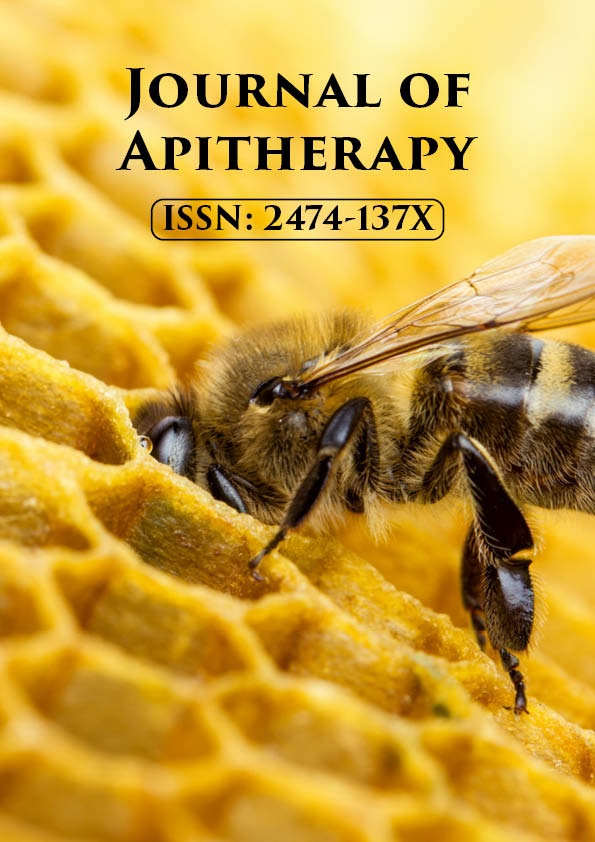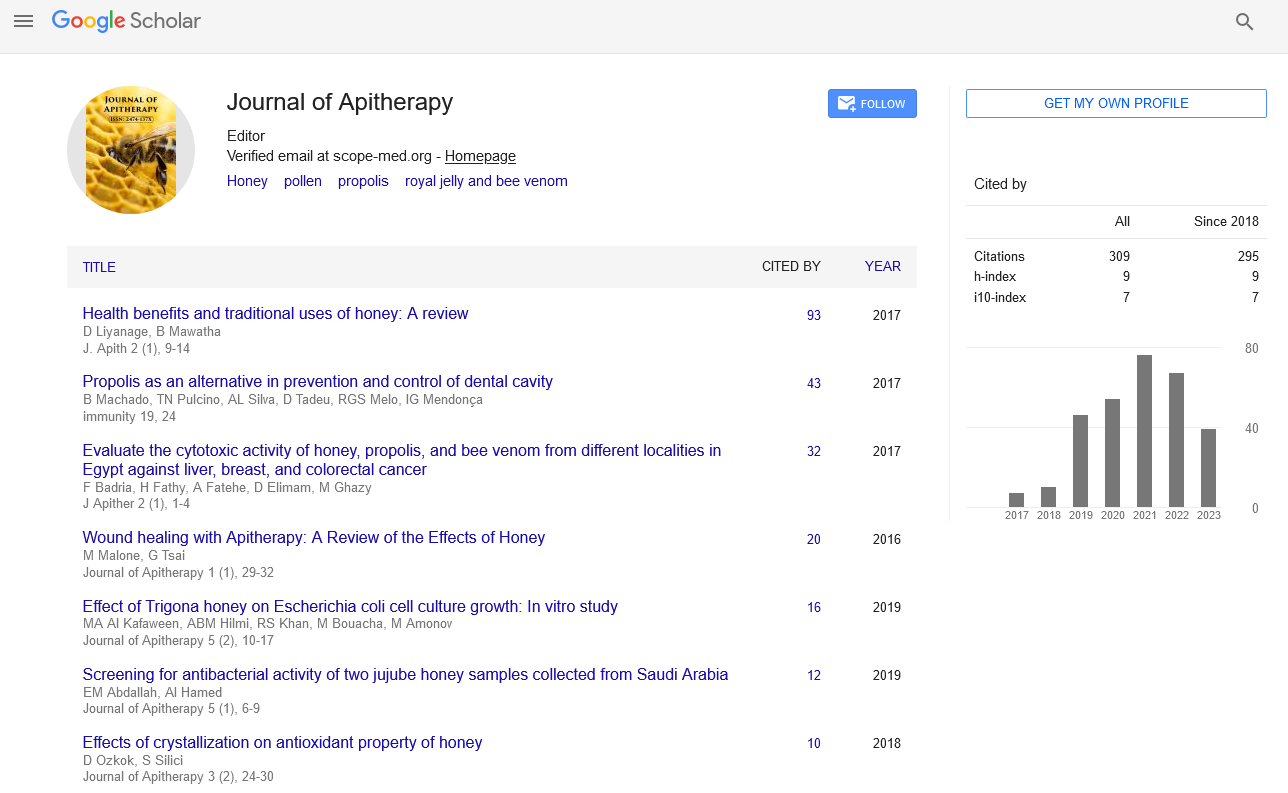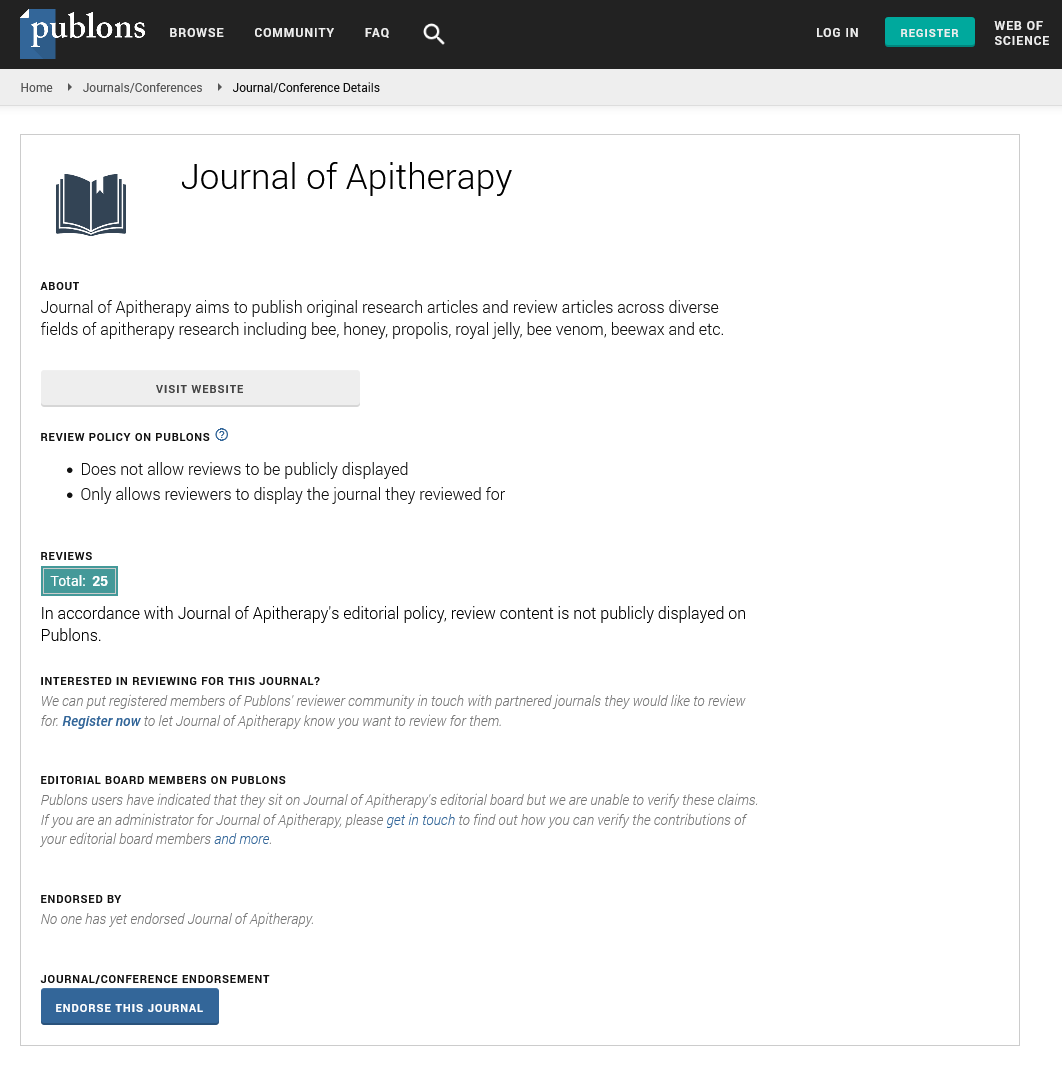Commentary - Journal of Apitherapy (2023)
Genetical and Anatomical Role of Drones
Angelina Rosy*Angelina Rosy, Department of Horticulture, Writtle University College, Writtle, England, Email: angelinaarosyy@gmail.com
Received: 03-Jan-2023, Manuscript No. Japitherapy-23-90199; Editor assigned: 05-Jan-2023, Pre QC No. Japitherapy-23-90199(PQ); Reviewed: 19-Jan-2023, QC No. Japitherapy-23-90199; Revised: 27-Jan-2023, Manuscript No. Japitherapy-23-90199(R); Published: 03-Feb-2023
Description
The haplodiploid sex-determination mechanism, which is known as the mixed forms of reproduction in honey bees and other social insects, is the subject of intense dispute and disagreement in the scientific literature. The drones perform two types of reproduction: they develop from the unfertilized haploid egg of the queen and create roughly 10 million male sperm cells, each of which is genetically identical to the egg. Drones are also used to mating with new queens and fertilising their eggs. Female worker bees are born as diploids, meaning that the father’s sperm contributed to their development from fertilised eggs. Offers an additional 16 chromosomes, bringing the total to 32, one pair from each parent. Full sisters from animals where the sperm is not genetically identical are less closely related than complete sisters from animals where all the sperm cells are genetically identical. When a worker bee lays eggs, they only produce unfertilized eggs that develop into male drones. However, some subspecies of honey bees have a process called thelytoky, where a worker bee can generate viable female offspring by using the second pair of chromosomes from one of the three polar bodies during anaphase II of meiosis. This is an exception to the general rule of drone-producing eggs. To control the genetic makeup of honey bee offspring, it is best to inseminate a queen artificially using drones from a single hive with a known mother. Queens naturally mate with multiple drones, which may not be from the same hive. This leads to female offspring with different genetic backgrounds from distinct groups of fathers.
Drones carry only one type of allele at each chromosomal position; because they are haploid. A diploid cell with 32 chromosomes develops into haploid cells called gametes with 16 chromosomes during the production of eggs inside a queen. This process is known as arrhenotoky, where a haploid egg is produced with novel combinations of alleles on each of the numerous loci found on chromosomes. As a result, the male bee’s family tree is peculiar because it lacks a father and only has a mother. The family tree has a first-generation member (the male), as well as a member from the previous generation, two members from two generations ago, three members from three generations ago, and five people seated four generations back. The series 1, 1, 2, 3, 5, 8, and so on is the Fibonacci sequence.
Anatomy
A drone is distinguished by having eyes that are twice as large as those of worker bees and queens, as well as a larger body as worker bees, but typically smaller than the queen. His abdomen is larger than the workers’ or the queen’s. The drone must be able to fly quickly enough to follow the queen in flight despite having a large body. A drone can fly for an average of 20 minutes. In summer, there are roughly 200 drones in an Apis cerana colony. Worker bees provide the food for the drones. Late autumn is when worker bees evict or kill off the drones, which die from exposure and lack of ability to feed or protect themselves till the end of spring, to return in the bee hive. The worker bees drive the drones out because if they were permitted to stay, they would exhaust the hive’s resources too quickly.
Copyright: © 2023 The Authors. This is an open access article under the terms of the Creative Commons Attribution Non Commercial Share A like 4.0 (https://creativecommons.org/licenses/by-nc-sa/4.0/). This is an open access article distributed under the terms of the Creative Commons Attribution License, which permits unrestricted use, distribution, and reproduction in any medium, provided the original work is properly cited.







